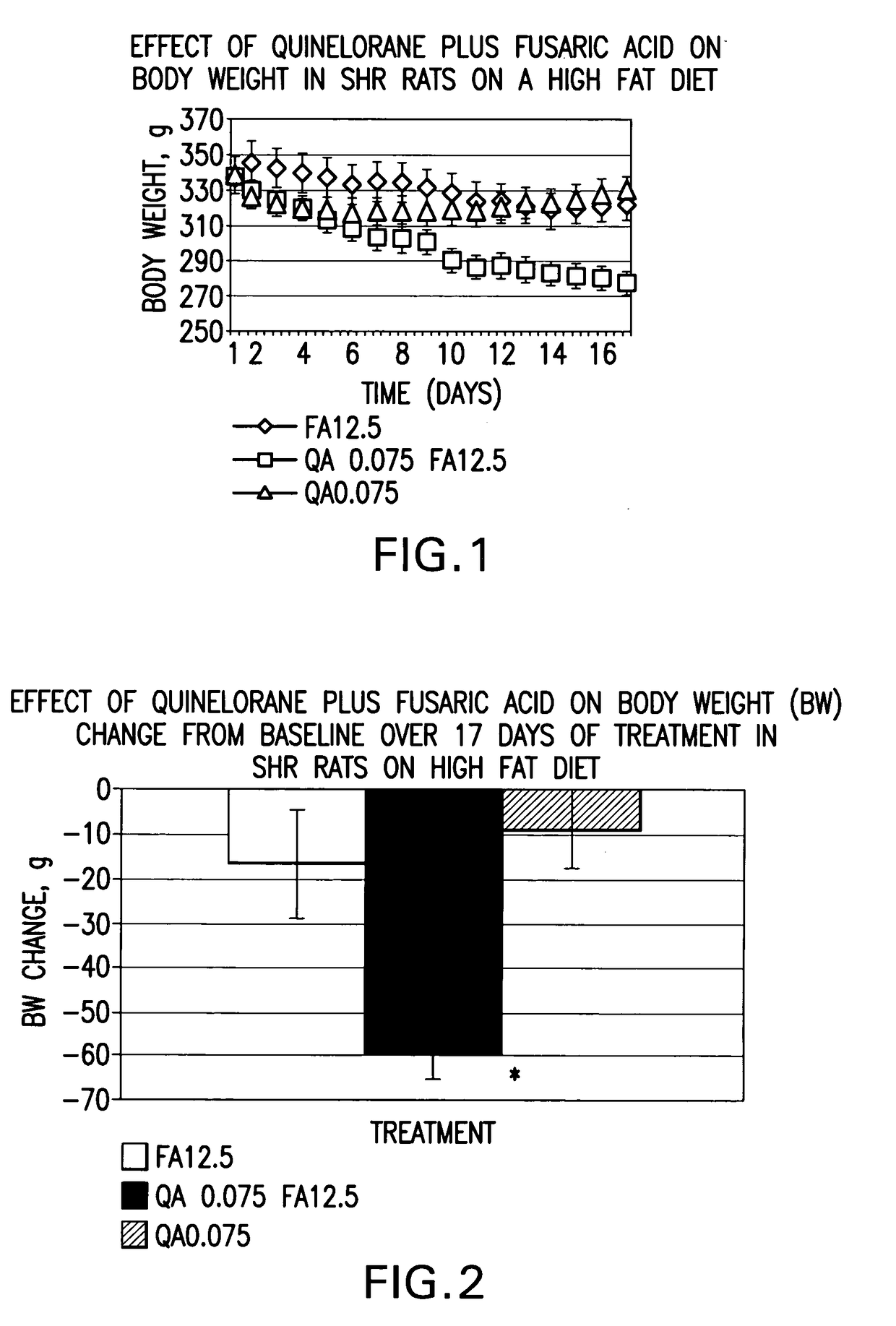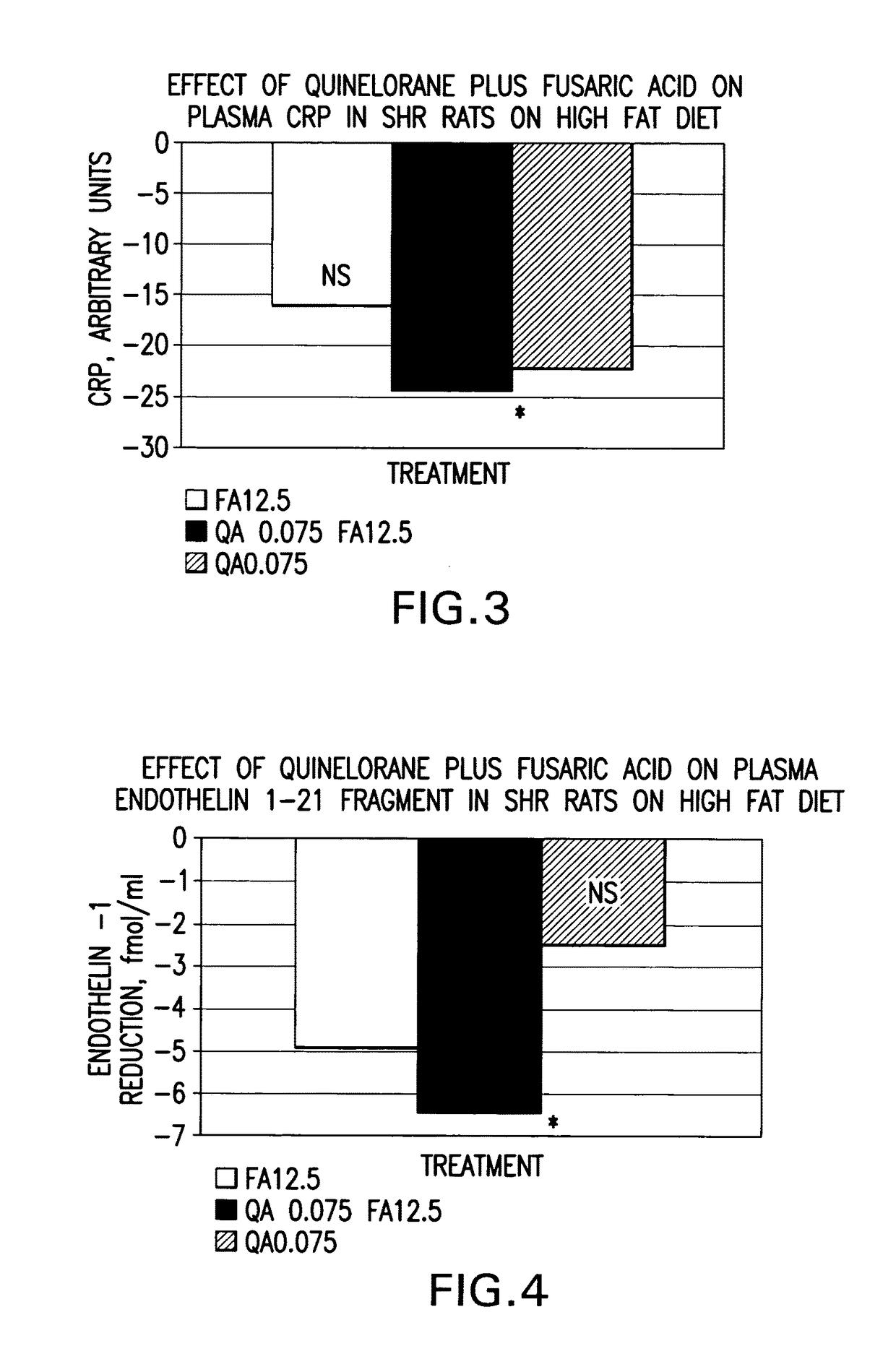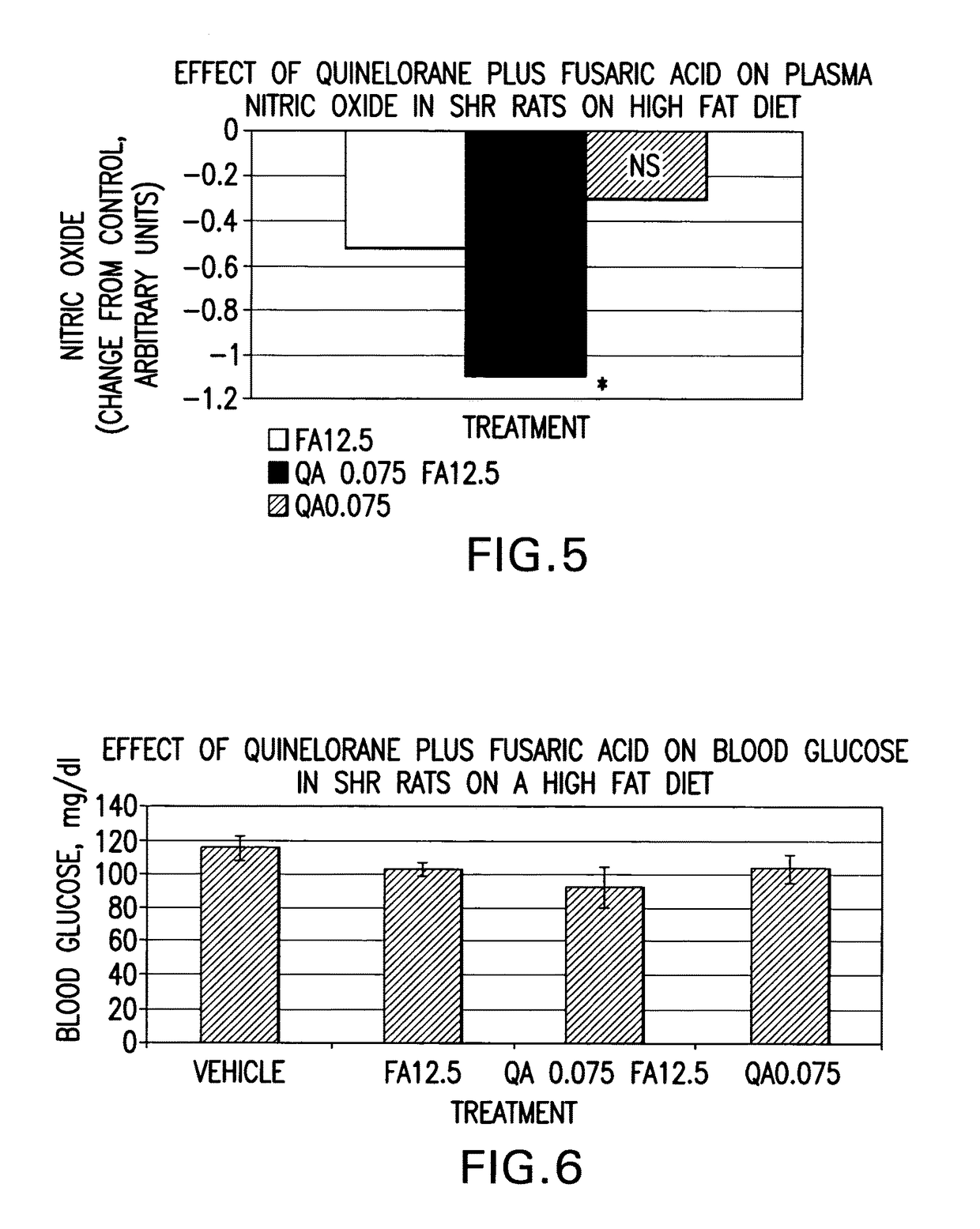Therapeutic treatment for metabolic syndrome, type 2 diabetes, obesity, or prediabetes
a metabolic syndrome and metabolic treatment technology, applied in the field of metabolic syndrome, obesity, prediabetes or metabolic conditions thereof, can solve the problems of no neuronal activity-based treatment of these diseases, and achieve the effects of reducing central neuronal norepinephrine activity, preventing arteriosclerosis, and increasing central neuronal dopamine activity
- Summary
- Abstract
- Description
- Claims
- Application Information
AI Technical Summary
Benefits of technology
Problems solved by technology
Method used
Image
Examples
example 1
Introduction
[0138]GBR 12909 (1-(2-[bis(4-Fluorophenyl)methoxy]ethyl)-4-(3-phenylpropyl)piperazine dihydrochloride) is a specific dopamine reuptake inhibitor. Systemic administration of GBR 12909 can increase the dopaminergic to noradrenergic neuronal activity in the central nervous system. A study was conducted to determine the effects of GBR 12909 upon blood glucose and plasma free fatty acid levels in obese, diabetic mice (ob / ob strain). The ob / ob mouse is hyperphagic, obese, insulin resistant, diabetic and dyslipidemic due to the absence of functional leptin as a result of a mutation in this gene. Starvation or calorie restriction of these mice leads to increases in plasma free fatty acid levels that can function over the long term to worsen diabetes. This animal model also exhibits renal, hepatic steatosis, cerebrovascular and cardiovascular disease as a result of its metabolic derangements.
Methods and Results
[0139]Different groups of obese, diabetic female (ob / ob) mice (body we...
example 2
Introduction
[0141]GBR 12909 is a specific dopamine reuptake inhibitor. Its use can increase the dopaminergic to noradrenergic neuronal activity in the central nervous system. However, by combining GBR 12909 with clonidine, a noradrenergic alpha 2 receptor agonist with preferential affinity for presynaptic alpha 2 sites, it is possible to further increase the dopamine to noradrenaline neuronal activity ratio in the central nervous system. A study was conducted to determine the interactive effects of GBR 12909 and clonidine on blood glucose level in ob / ob mice.
Methods and Results
[0142]Obese, diabetic female ob / ob mice (body weight of approximately 28 g) with mild diabetes were maintained on 14 hour daily photoperiods, housed one per cage and allowed to feed ad libitum. Different groups of these animals were randomized to once daily treatment with either a specific dopamine reuptake inhibitor, GBR 12909 at an approximate dose of 20 mg / kg body weight (n=4), or clonidine at an approximat...
example 3
Introduction
[0144]Amphetamine is a selective presynaptic dopamine release enhancer. It also acts as a presynaptic noradrenergic release enhancer but at higher dosages that will counter the effect of the dopamine reuptake inhibition activity to improve metabolism. However, addition of a dopamine D2 receptor agonist will act to reduce any amphetamine-induced increase in synaptic noradrenaline level and therefore should produce a more pronounced desired effect on metabolic disease than amphetamine or the D2 receptor agonist alone. A study was conducted to determine the effects of low dose amphetamine (3 mg / kg) with or without the dopamine D2 receptor agonist bromocriptine (5-<10 mg / kg dose) upon body weight gain, blood glucose, plasma free fatty acid and triglyceride levels in obese, diabetic mice (ob / ob strain). It has been previously demonstrated in the literature that bromocriptine treatment at this dose has no effect on feeding, body weight, or blood glucose in these animals (Life ...
PUM
| Property | Measurement | Unit |
|---|---|---|
| body weight | aaaaa | aaaaa |
| body weight | aaaaa | aaaaa |
| body weight | aaaaa | aaaaa |
Abstract
Description
Claims
Application Information
 Login to View More
Login to View More - R&D
- Intellectual Property
- Life Sciences
- Materials
- Tech Scout
- Unparalleled Data Quality
- Higher Quality Content
- 60% Fewer Hallucinations
Browse by: Latest US Patents, China's latest patents, Technical Efficacy Thesaurus, Application Domain, Technology Topic, Popular Technical Reports.
© 2025 PatSnap. All rights reserved.Legal|Privacy policy|Modern Slavery Act Transparency Statement|Sitemap|About US| Contact US: help@patsnap.com



